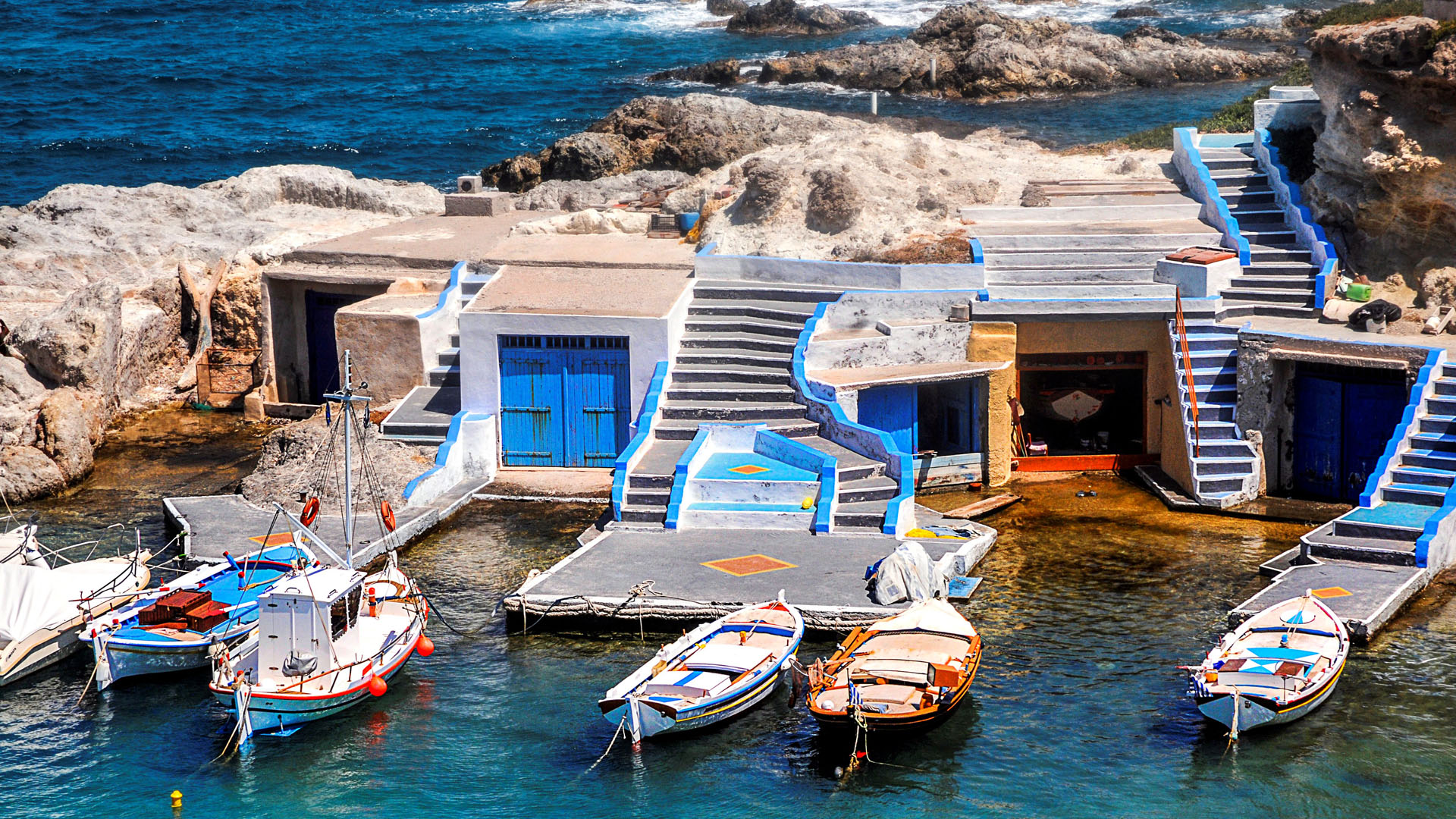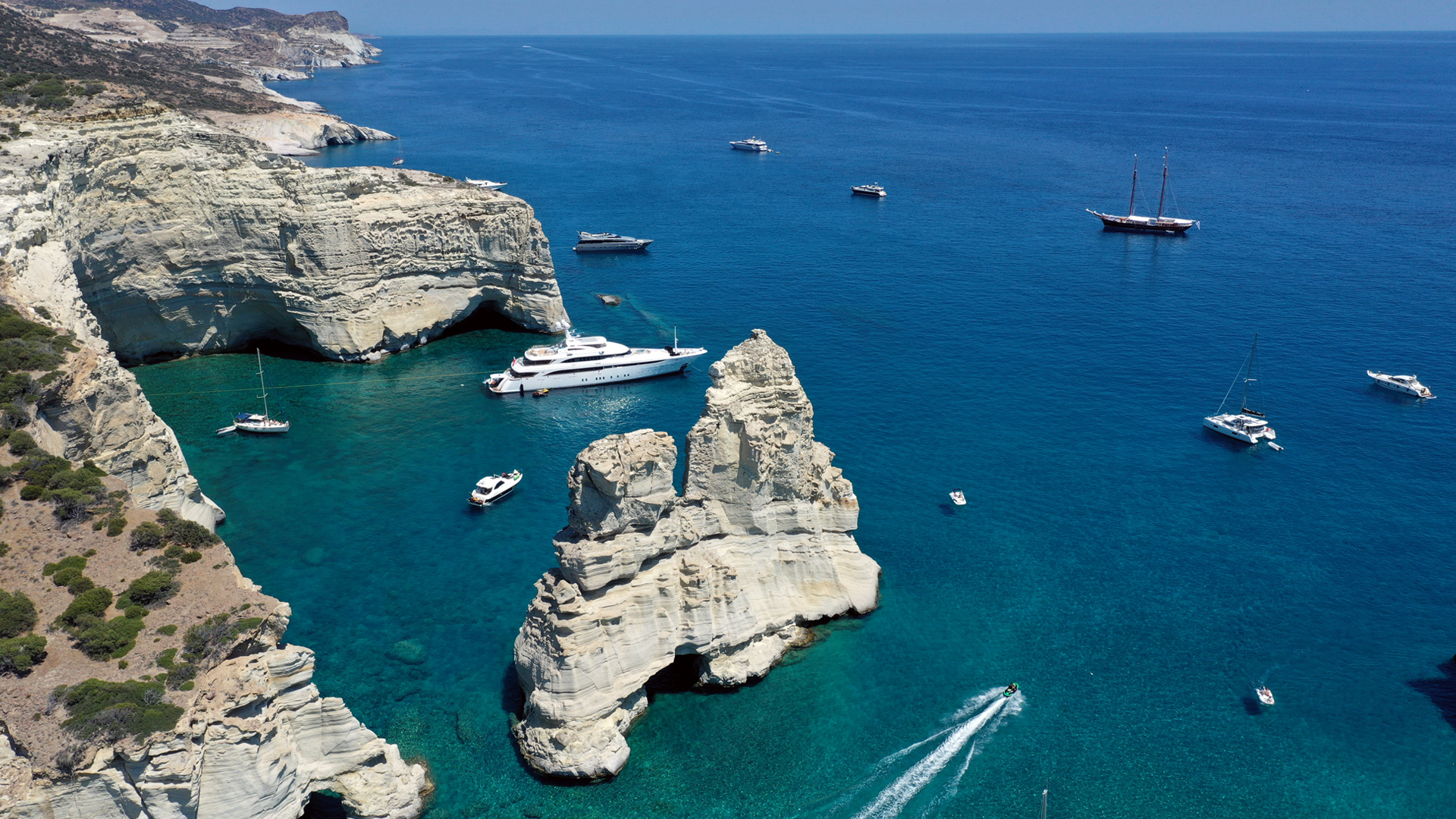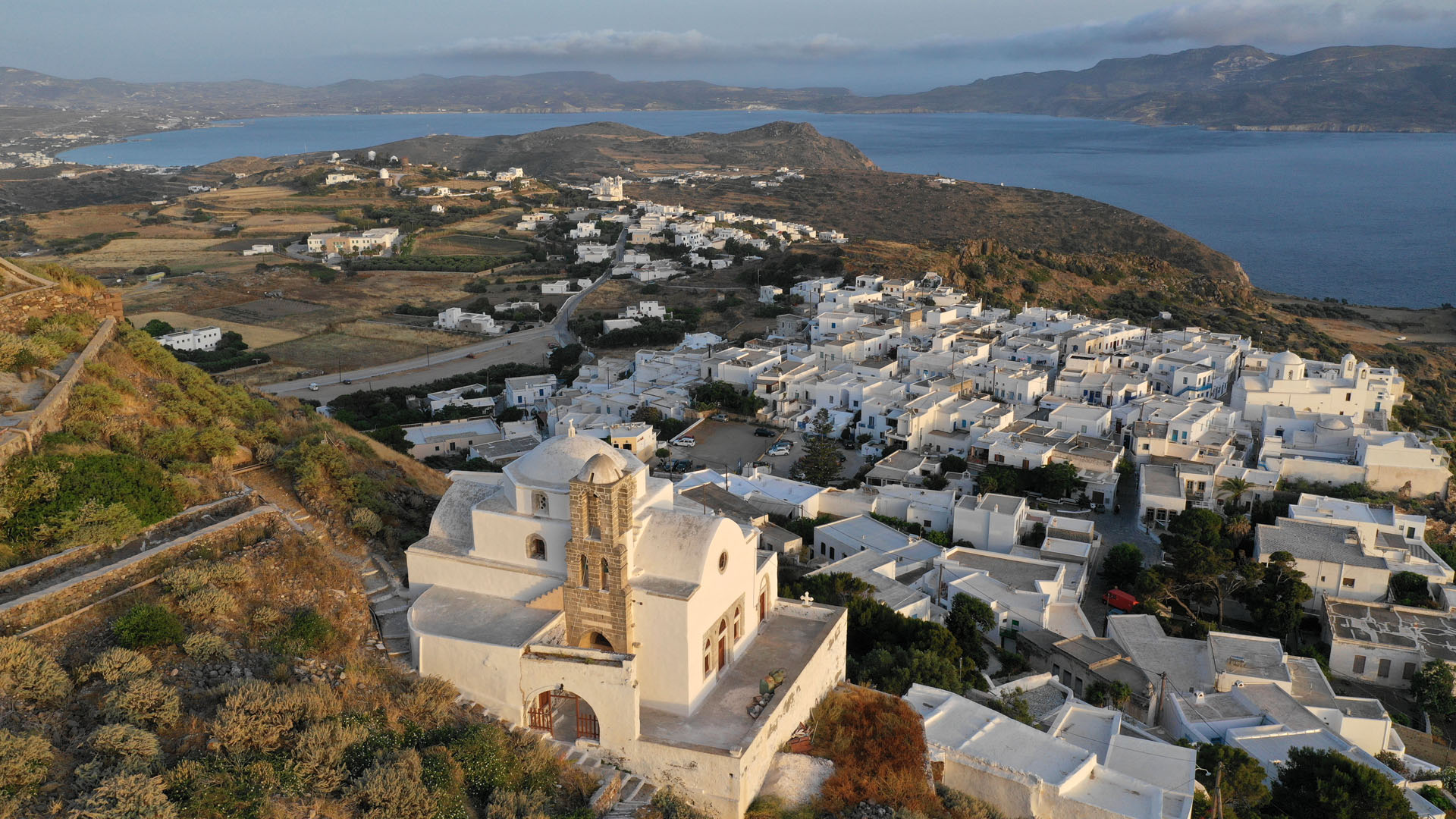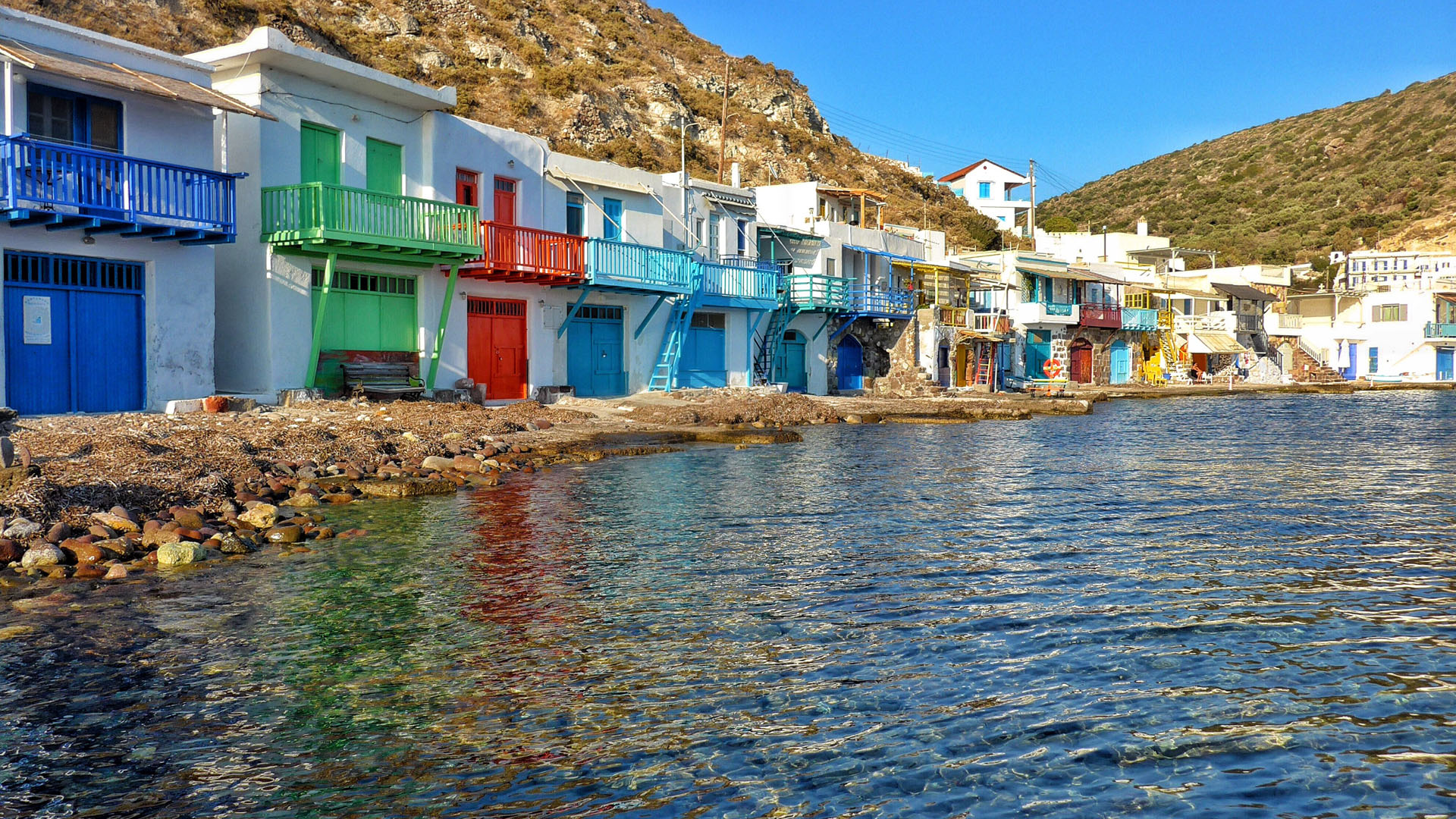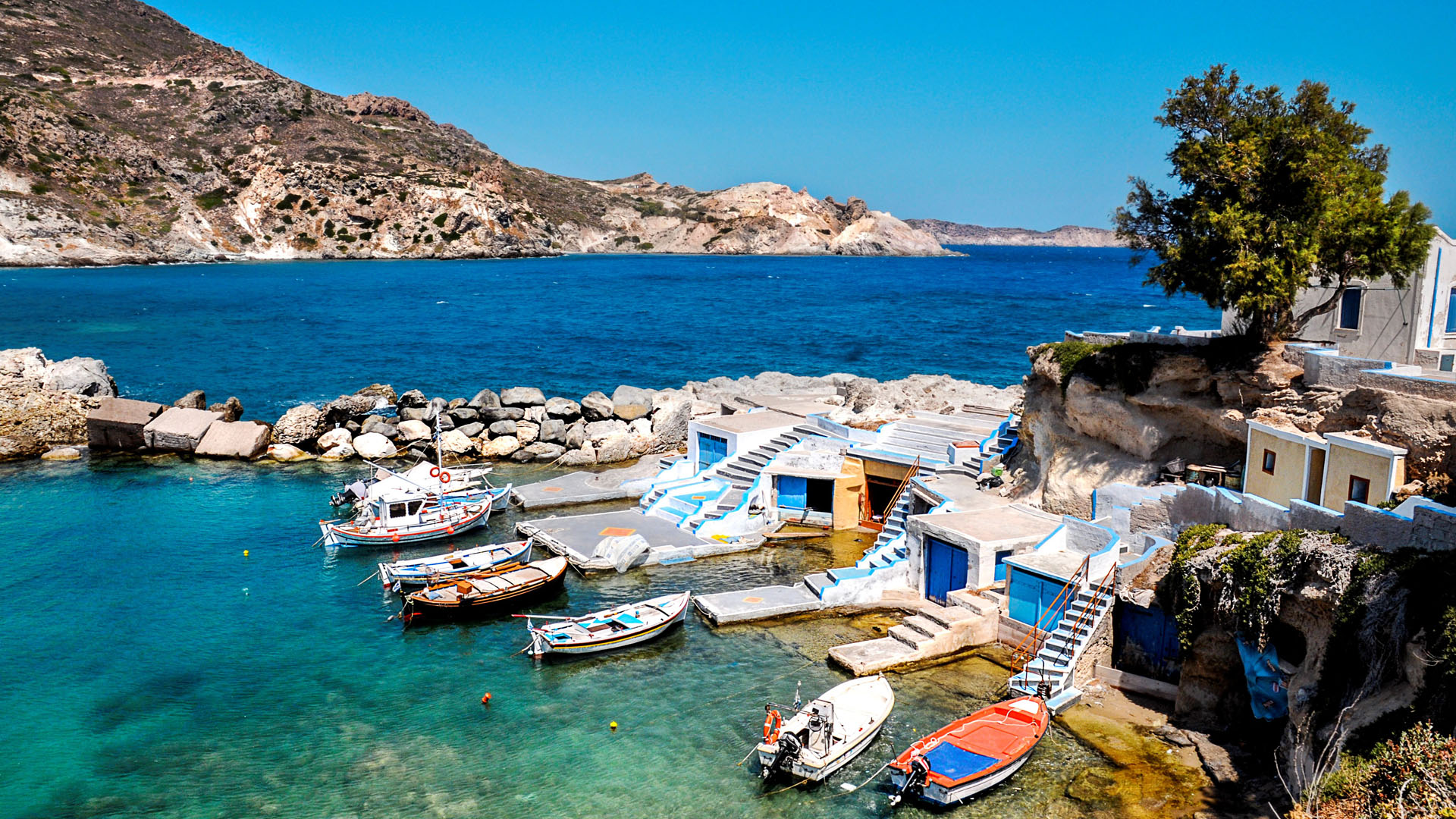
30°
Milos
WHY GO?
Like Santorini, Milos owes its extraordinary beauty to its explosive volcanic past. All luminous waters and lunar landscapes, its natural mystique is magnetic. Rich in minerals and hot springs, the island is rich in history too. There are catacombs, amphitheatres, castles and abandoned mines to explore.
DID YOU KNOW?
In 1820, a local farmer was digging in a field when he discovered the Venus de Milo. This marble masterpiece, now in the Louvre, was broken into several pieces. Her arms were never found. Some scholars believe the statue does not depict Aphrodite, goddess of love and beauty, but Amphitrite, goddess of the sea.
DON’T MISS
The unique fishing villages of Klima, Mandrakia, and Firopotamos. Carved into the rocks at the water’s edge are brightly coloured syrmata, fishermen’s shacks with parking space for their boat downstairs and simple living quarters upstairs.
BEST BEACHES
There are over 70 beaches on Milos, and no two are alike. Gold, pink, or chalk - white; rocky, sandy or lined with jewel-toned pebbles, Milos conjures every geological wonder under the sun. Dive off the undulating limestone rocks of Sarakiniko, which look more like the moon than the Mediterranean. Or take a boat trip around Milos to swim through the glittering pirate caves of Papafragas and Kleftiko.
EAT & DRINK
Simply grilled fish, sun-dried octopus, tomato salad and tzatziki. Nothing tastes better than these pure Greek classics, as the Aegean laps around your table. As well as delicious seafood, Milos dishes up roast goat (that has run wild in the thyme-scented hills), bouyourdi (a tasty scramble of tomatoes, feta and peppers), and lamb and aubergines slow-cooked in a geothermal sand pit.
LOCAL SECRET
In Adamantas, check out the underground bunkers and tunnels built by the Nazis during Greece’s occupation in the second world war. This subterranean complex has been converted into an amazing exhibition space.
